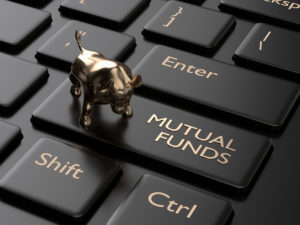Exchange Traded Funds
Exchange Traded Funds
An Exchange-Traded Fund (ETF) is a security that tracks an index, a commodity or a basket of assets like an index fund, but trades like a stock on an exchange.
Our income is derived solely from our clients. Our loyalty is to our clients, not any large investment company or bank.
Exhange Traded Funds
An Exchange-Traded Fund (ETF) is a type of investment fund, with shares that are traded on stock exchanges, similar to individual stocks. ETFs are designed to track the performance of a specific index, commodity, bonds, or a basket of assets, and they provide investors with a way to diversify their portfolios and gain exposure to various asset classes or sectors. Overall, ETFs have become popular investments for their versatility, low costs, and ease of trading.

Advantages of ETFs:
Diversification : ETFs typically hold a diversified portfolio of assets, spreading the risk across multiple assets.
Liquidity : ETFs are traded on stock exchanges throughout the trading day.
Transparency : Most ETFs publish their holdings daily, so investors can see exactly what assets are in the fund.
Low Expense Ratios : ETFs generally have lower expense ratios compared to traditional Mutual Funds.
Tax Efficiency : ETFs are often tax-efficient due to their unique structure.
Flexibility : You can trade ETFs throughout the day at market prices, which gives you flexibility in terms of when you buy or sell them. This is different from mutual funds, which are typically priced once a day at the net asset value (NAV).
Variety : ETFs are available for a wide range of asset classes, including stocks, bonds, commodities, real estate, and more. You can find ETFs that track specific sectors, countries, or investment strategies.
Creation and Redemption : The structure of ETFs involves authorized participants (usually large financial institutions) who can create or redeem ETF shares in exchange for a basket of the underlying assets. This mechanism helps keep the ETF’s market price close to its Net Asset Value (NAV).
Option Trading : Common option strategies involving ETFs include covered calls, protective puts, and various spread strategies, such as credit spreads and debit spreads. These strategies can be used for income generation, risk management, or speculating on the price movement of the ETF or its underlying assets.
Disadvantages of ETFs:
- Tracking Error : Not all ETFs perfectly track their underlying index.
Lack of Active Management : Most ETFs are passively managed, which poses challenges for certain asses classes such as fixed-income
ETFs versus Mutual Funds:
ETFs: Traded on stock exchanges, offer intraday trading, lower expense ratios and tax efficiency.
Mutual Funds: Priced once daily (NAV), may have higher fees, active or passive management, and potential capital gains distributions.
Insights

Taxes are a drag: ETF Tax Efficiency vs. Mutual Fund Inefficiency
Mutual fund annual distributions can create a major “tax drag” on your real after-tax return with annual fund tax costs potentially two
Beware “Hidden” Costs in Mutual Funds
Since the 1960’s, mutual funds have seen an exponential increases in demand. Mutual funds have basically become a “go-to” investment for retail





